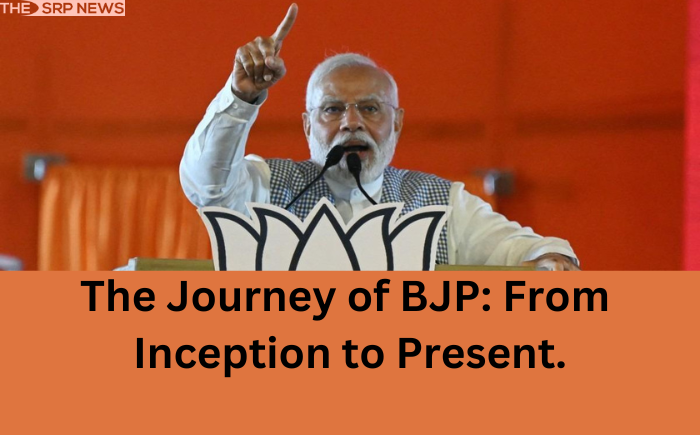The Bharatiya Janata Party (BJP), one of India's major political entities, has had a significant impact on the country's political landscape since its formation. With roots tracing back to the post-independence era, the BJP's evolution reflects the dynamic nature of Indian democracy. This article chronicles the journey of the BJP from its inception to its current status.
Origins and Formation
The BJP's origins are intricately linked to the Bharatiya Jana Sangh (BJS), founded by Dr. Syama Prasad Mukherjee in 1951. The BJS was established as a right-wing nationalist party, advocating for the promotion of Indian culture and values. It emerged as a response to the then-dominant Indian National Congress (INC), aiming to offer an alternative vision for India's future.
The BJS gained traction in the political arena but struggled to achieve widespread electoral success. It remained a significant force in Indian politics, particularly in northern India, until its merger with several other parties in 1977 to form the Janata Party. This merger was a strategic move to oppose the emergency imposed by then-Prime Minister Indira Gandhi.
Birth of the BJP
The Janata Party coalition, although initially successful in defeating the Congress in the 1977 elections, was fraught with internal conflicts. By 1980, the coalition disintegrated, leading to the re-establishment of the BJS members under a new banner—the Bharatiya Janata Party. Atal Bihari Vajpayee, a respected leader from the BJS, became the BJP's first president.
Early Struggles and Ideological Foundation
In its early years, the BJP struggled to make a significant mark on the national stage. The party's ideology was rooted in Hindutva, a term coined by Vinayak Damodar Savarkar, which emphasized Hindu nationalism. This ideological foundation aimed to unite the Hindu majority under a common cultural and political umbrella.
Despite its efforts, the BJP's initial electoral performance was lackluster. The party's breakthrough came in the late 1980s and early 1990s, primarily through its association with the Ram Janmabhoomi movement, which sought to construct a temple at the disputed site in Ayodhya. This movement resonated with a large section of the Hindu population, significantly boosting the BJP's popularity.
Rise to Power
The 1990s marked a turning point for the BJP. The party's strategic alliances with regional parties and its focused campaign on Hindutva helped it gain momentum. In 1996, the BJP emerged as the single largest party in the Lok Sabha elections but fell short of a majority. Atal Bihari Vajpayee was invited to form the government, but his tenure lasted only 13 days due to a lack of support.
In 1998, the BJP-led National Democratic Alliance (NDA) successfully formed the government, with Vajpayee as the Prime Minister. This period saw significant economic reforms and efforts to improve India's global standing. However, the NDA government faced challenges, including internal conflicts and external pressures.
Consolidation and Expansion
The BJP's tenure from 1998 to 2004 laid the groundwork for its future successes. Despite losing the 2004 elections to the Congress-led United Progressive Alliance (UPA), the BJP continued to strengthen its organizational structure and expand its base. The party's focus on grassroots mobilization and its ability to adapt to changing political dynamics proved advantageous.
The Modi Era
A pivotal moment in the BJP's history came in 2014 when Narendra Modi, the then Chief Minister of Gujarat, led the party to a decisive victory in the general elections. The BJP, under Modi's leadership, secured a clear majority in the Lok Sabha, a feat not achieved by any party in three decades. Modi's campaign focused on development, governance, and national security, appealing to a broad spectrum of voters.
The BJP's 2014 victory marked the beginning of a new era. The party implemented numerous economic and social reforms, including the Goods and Services Tax (GST), the Insolvency and Bankruptcy Code, and various initiatives aimed at digital transformation and financial inclusion. Modi's leadership style and the party's strategic communication played crucial roles in shaping public perception.
Recent Developments
In 2019, the BJP repeated its electoral success, securing an even larger mandate in the general elections. The party's emphasis on nationalism, economic reforms, and social policies continued to resonate with the electorate. Key developments during this period included the abrogation of Article 370, which granted special status to Jammu and Kashmir, and the enactment of the Citizenship Amendment Act (CAA).
Challenges and Future Prospects
As the BJP looks towards the future, it faces several challenges. Economic disparities, social tensions, and regional aspirations are areas that require careful navigation. The party's ability to address these issues while maintaining its ideological coherence and expanding its voter base will be crucial for its continued success.
In conclusion, the BJP's journey from its inception to its current status as a dominant political force is a testament to its resilience, adaptability, and strategic acumen. As India continues to evolve, the BJP's role in shaping the nation's future will remain significant.
Researched & Written by :
Ruchi Tiwari
Read More:
Join Our WhatsApp Channel: Click Here to Join
